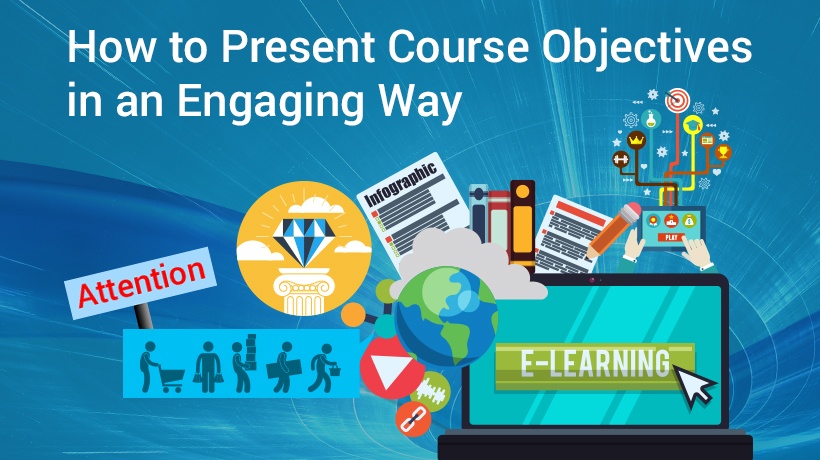Presenting Learning Objectives Minus The Bullets
What if I were to start my article like this: In this article, you will learn to describe the benefits of using alternative ways of presenting learning objectives...
Now, what if I were to start this article using an image accompanied by a text?
 fizkes/shutterstock
fizkes/shutterstock
Both option 1 and option 2 convey the objective behind writing this article; the only difference being with option 2, I dive straight into the topic.
In eLearning too, there are ways that allow you to present learning objectives without bringing Mr. Benjamin Bloom into the picture.
1. Ask Relevant Question/s
Analyze your content, and frame a question based on the key learning takeaway/s.
Let’s assume that your module is about time management techniques. Your module could start by asking the learners something like, "In the morning, you made a to-do task list. The list contained 15 tasks. How will you manage to complete these tasks without going crazy?"
Asking a relevant question to learners has certain benefits. These are:
- The context of learning gets established easily. As a result, the "What’s in it for me?" question gets answered right at the start.
- Learners experience an instant connection with the module as the questions are based on something that they might have observed or experienced.
- The use of reflective questions can prod learners to think about the ways in which they can apply the learning from the module to real-life situations.
2. Start With A Scenario
Scenarios are a great way to get learners acquainted with learning objectives. Your scenario could be either a self-contained story or something that leads to a question.
For instance, a module teaching learners about the importance of complying with data privacy rules could start with a scenario wherein a project manager is having a call with a client. The project manager starts recording the call without informing the client. The client gets upset over the fact that the call was being recorded without her permission. She labels the incident as a violation of privacy; the project manager is fired.
Or, you could tweak the same scenario and ask for the learner’s input in the following way: Should the project manager inform the client that the call is being recorded? Based on the options (yes or no) chosen by learners, the scenario could progress and show either the character thanking the learner or the character getting fired.
Starting with a scenario is beneficial because:
- Your learners become engaged on an emotional level. Research has shown that emotions are critical to learning and memory. Professor Theodore Frick, professor emeritus at Indiana University, explains in his paper:
If students do authentic, real-world tasks, they are likely to be motivated to learn. This motivation, coupled with emotion and sensations arising from actively performing authentic tasks, will result in strengthened synapses in the human nervous system.
- Learners get a clear idea about the importance of the module in their real-life.
3. Use Contextual Animations
Contextual animations are another way of introducing learning objectives, especially for modules that focus on factual knowledge.
For example, a module focusing on glassware for alcoholic beverages could begin with something like a hand holding a bottle of champagne as if the drink is about to be served. There are different glassware coming and going as if they have been put on a sort of conveyor belt. The moment the right glassware appears, the hand pours the champagne.
Using a contextual animation has the following benefits:
- Learners get a bird’s eye view of the module.
- Learners get hooked. For example, while making a module on the architecture of the Indus Valley Civilization for grade 6 students, I started the module by showing images of the different structures associated with this civilization. By showing the images beforehand, I managed to pique the learners' interest, as these structures were unlike anything that the learners had seen before.
Thus, there are alternatives to bulleted lists when it comes to getting learners acquainted with the learning objectives. Does it mean that Instructional Designers should ditch Bloom’s taxonomy?
No! I believe that Bloom’s objectives need to be used as they help in determining the content you need to include in your module, the instructional strategy you will adopt to deliver this content, and the assessment questions that need to be designed. Hence, learning objectives need to be a part of your learning proposals and design documents. However, they need not be a part of the learning deliverables.









